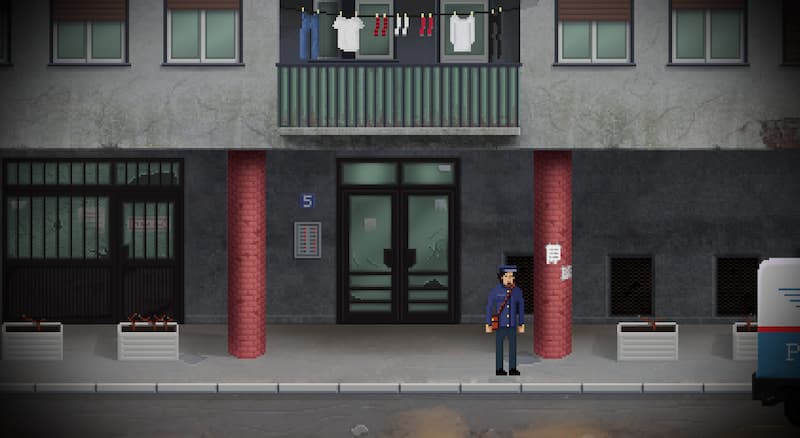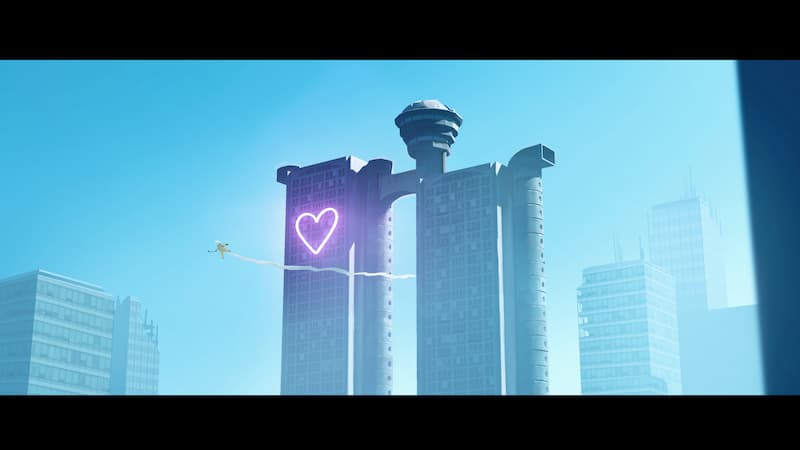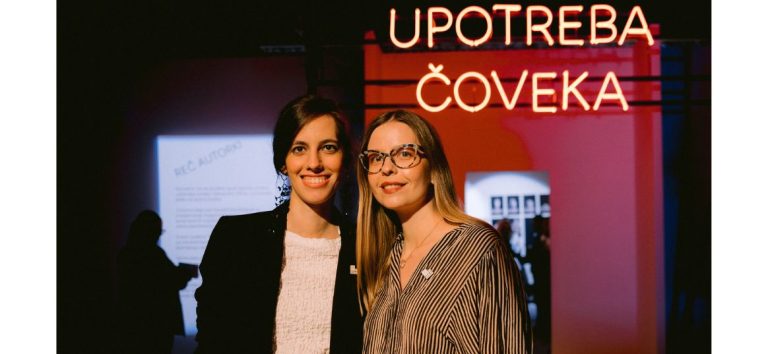At the Art of Gaming exhibition, we will discover that gaming is more than just a fun pastime, but an active form of art. The exhibition will be followed by a panel discussion, and together we will immerse ourselves in the world hidden behind the pixels and learn what makes it so fascinating. The curator of this exhibition is the astrophysicist Tijana Prodanović, PhD, a former professor at the Faculty of Sciences in Novi Sad, who, in addition to working at a start-up company that deals with applied physics and artificial intelligence, is a big TikTok star!
One of the few local scientists, who uses social networks to promote science, Tijana Prodanović selflessly shares her knowledge on TikTok, by publishing educational content for young people, and in an informal way bringing science closer to people outside the classroom. In anticipation of the Art of Gaming exhibition, which we recommend you visit in the District, we talked to this ‘TikTok scientist’, as her followers often call her, and she revealed to us what we will have the opportunity to see and experience, as well as what topics she mostly deals with on this social network.
The opening of the fifth Kaleidoscope of Culture, in the District, will be marked by the Art of Gaming exhibition, which is not only an exhibition, but also a story, a game, and a real experience! To begin with, can you introduce us to this specific project and what the audience will have the opportunity to see in the District?
This exhibition is intended for gamers and people from the gaming industry, but also for all those who have never experienced or thought about video games from the point of view of art. As the basis of all games is to immerse you in a world and lead you through a story level by level, so is the Art of Gaming exhibition composed of 4 levels, 4 exhibitions and 4 panels, each of which will deal with one artistic aspect of video games. On the first day, we are expecting the Art of Pixel, which will be dedicated to the development of technology and graphics in video games, and pixel art as a graphic style of the first video games that is still popular to this day. At 8 p.m., visitors can expect a panel discussion From Pixels to Pixel Art, where Ivica Milarić, professor at the Academy of Arts in Novi Sad, Nikola Dimitrijević, game designer and artist from Morning Light Games, and Petar Gnip, an artist from Tender Troupe, will participate. On the second day, the second level Art of the Realistic will be dedicated to contemporary 3D and 2D art, and efforts to make the world in video games as similar as possible to the real world. The third level, the Art of the Independent, will be dedicated to the design and aesthetics of indie games, i.e., games of independent production, and the panel Freedom in Video Games will be discussed by Igor Simić, CEO and creative director of Demagog Studio, and Slobodan Dan, Co-Founder of Grimwork Games. The last day of the Art of Storytelling exhibition will be dedicated to the common elements and the common characteristics between film art and art in video games.

In what ways can we make a connection between the gaming industry and today’s art?
When gaming and the gaming industry are mentioned, the first thing that comes to mind is entertainment, but also the developers behind the video games. However, behind a video game, there are a bunch of artists as well – from 3D/2D artists, and animators to composers, writers, and sound designers. The artistic elements of a video game are what give the games their aesthetics, style, and atmosphere, which are primarily responsible for transporting the player into the world of the video game.

You are an astrophysicist, and for years you taught at the Faculty of Sciences in Novi Sad. What would you single out as advantages of pedagogical work, and what as the disadvantages of our formal education system? We assume that you can draw a parallel with the educational system in America, where you received your education.
I think that teaching is one of the most underrated professions in our society. Due to how society and the state see it, but also because of how individuals see it. I was also one of those individuals who did not want to teach too much at the beginning, and just focus on scientific work, because I thought that pedagogical work, although noble, was something from which I could not continue to learn and grow. I used to reduce it to mere repetition of one and the same.
It was only when I started teaching that I saw how much I, myself could learn by trying to explain something to others. I realised it made me a much better scientist.
Partly responsible for that realisation was the fact that I took my first teaching steps in America, during my doctoral studies, where lectures are way more relaxed, and where people ask all kinds of questions without hesitation – some of those questions are very good and force the lecturer to find even better explanations. One of the biggest shortcomings of our formal education is that the culture of asking questions is not fostered, instead, almost all questions are treated as some form of resistance, everywhere.
On social networks, you are known as the ‘TikTok Scientist’, publishing educational content on the Dr Cosmic Ray profile. What prompted you to start this channel, as a way of educating young people in the field of science?
I have been working on scientific communication and popularisation for almost 15 years. I gave numerous popular lectures both in the country and in the world and organised science festivals, such as the Researchers’ Nights, but lately, it has become clear that young people are increasingly informally educating and informing themselves on YouTube, and now also on TikTok. So, since I think that formal education in the classroom, frontally, isn’t quite as effective anymore, I wanted to provide young people with some educational content in their surroundings. It was one of the best ideas I’ve had in a while.
Whatever question your followers have about physics and science in general, you always have an answer ready on TikTok. What interesting questions do people ask you most often and what other topics are of additional interest to them?
TikTok’s most valuable feature is exactly what our education system lacks – a climate where anyone can ask any question without fear. And the questions that young people ask are great! I like creative questions the most, what I call the WWHI questions (what would happen if) where they ask for example, what would happen if there was no moon, or what would happen if the earth stopped rotating. There is usually no place for such questions in the classroom, and they are the most valuable for creating functional knowledge because they require you to connect more information from different sides. And by answering those questions, I hope I show them how to achieve it.
How challenging is the popularisation of science in 2022 through social networks, and what responsibilities does it carry? And how would you describe your communication with young people today?
It’s challenging, but that’s exactly why it’s important. It is challenging, because today, more than ever before, we are exposed to various pseudo-fake stories and conspiracy theories that are easiest to spread through social networks. On the other hand, although scientific knowledge, on which the world functions, after all, is different, not enough scientists talk about it, or talk to people who are not in the world of science about it, so their voices are not heard, remaining only as silent voices in books, and scientific works. That is why I think that in addition to science, we should teach future scientists scientific communication.
We also need to look at the fact that men generally take the lead when it comes to science. Did you face any prejudice while making a path for yourself in the world of science?
It is interesting that in the field of physical sciences and astronomy, there is roughly the same number of men and women scientists in our area, while in Western countries women scientists are by far in the minority. Unfortunately, this does not mean that the women physicists and astrophysicists of Serbia are particularly successful in the fight for the position of women in their profession, because when it comes to some important issues, heads of institutions, projects, trust in the management of some serious affairs, the position there is still worse. And there are prejudices of another kind.
Whose scientific work particularly motivates you?
Science is a collective effort, and no scientist would be where they are if they worked in a vacuum. So, I found inspiration and motivation in numerous scientists.
You are also one of the organisers of the ‘Researchers’ Night’, which is also a way of promoting science. Are young people happy to accept this event, and how much of a role do social networks play in popularising such events?
The popularity of these events is huge, and this is an indicator of how much people, young people, and children love science. And when you compare that with the percentage of them who eventually decide to pursue a career in science, it becomes clear that somewhere in between, while they are in school and see how society works, something happens that turns them away from science. But that’s exactly why events like the Researchers’ Night are important – for children to learn from them and to be constantly reminded that science is much more than what we learn in schools. Of course, social networks today are crucial in the promotion of everything, including these events.
In addition to being an extremely successful scientist, you also have a talent for music – you play the violin, saxophone, and guitar, and you also graduated from a music school in your childhood. Do you find enough time to devote yourself to this art?
Although I have never been professionally involved in art, it has always had a special place in my life. I wished to play the violin as a kid, watching Stefan Milenković on TV, who was a child prodigy at the time, with the way he played. After that, I switched to the saxophone, then the guitar, and right now I’m interested in the drums. I try to always listen to art with one ear in order to understand and appreciate it. That’s why I wanted to create an exhibition like the Art of Gaming, to draw attention to a type of art that is not talked about enough – the art in video games
Author: Marina Marić
Photo: Private archive








